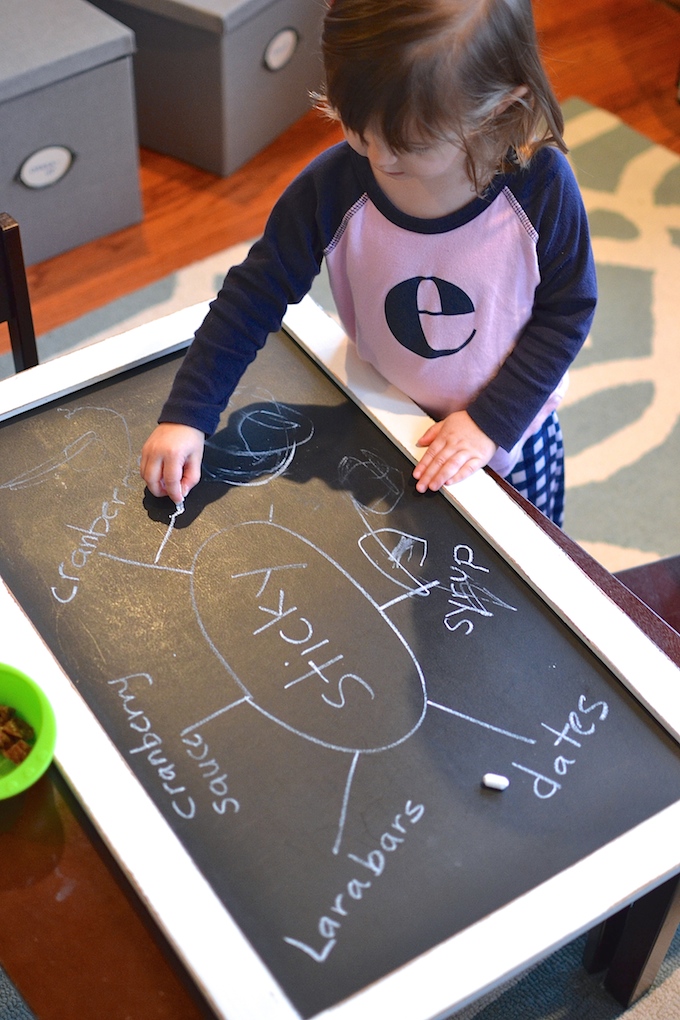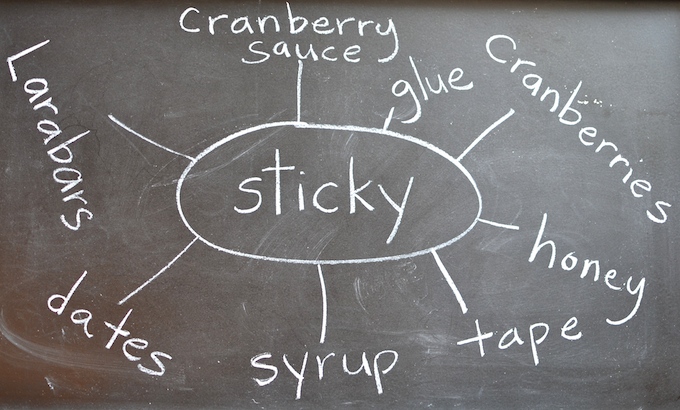Dates are sticky…cranberries are sticky…peanut butter is sticky… What else is sticky? With our Homemade “Larabars” recipe, we’re talking about all things “sticky” using a Word Web!

So, what is a word web? The National Education Association states, “Word webs (also known as semantic mapping) illustrate how key words or concepts are related to one another through graphic representations.” Word webs are a visual way to organize information, to connect ideas and to find relationships between concepts. For older children, word webs are also a great pre-writing tool for brainstorming ideas before starting a project or writing a paper.
Start by writing your central idea in the center of your paper, or on a chalkboard/whiteboard. Draw a circle around it. Then draw several lines starting at the edge of the central circle and leading away from the circle. The ideas that you write at the end of each line should relate to your central idea.

For our “Larabar” recipe, we focused on the adjective “sticky” to describe these yummy snack bars. Here are some questions to ask your child:
- Can you think of any foods that are sticky?
- Give them clues if they’re stumped! “What do you put on your pancakes?”, “What do you eat with jam on a sandwich?”, “What do bees make?”
- Are there other things that are sticky that are not food?
- Give them more clues if they’re stumped! “What kind of sticky materials do you use for art projects?”, “What did we squeeze onto our paper when we were using rice to learn about the letter R?”
- If we wanted to make another word web to describe our “Larabars”, what other adjectives could we use?

Some ideas for your “sticky” word web:
- Food – Larabars, dates, other dried fruit, peanut butter, syrup, honey, gum, caramel, taffy, marshmallows
- Non-food – tape, glue, stickers, postage stamps, envelopes
You can make word webs with any word using any recipe you like! It’s a great way to get your kids talking about food and a fun way to help them make connections between ideas.
Disclaimer: As with all of our recipes, my suggestions for how kids can help with a particular recipe are based on what has worked in our kitchen. Your child may be able to help more or less based on their age and/or ability. As always, make sure you are properly supervising kids in the kitchen.
 Carol says
Carol says
February 24, 2016 at 7:39 AMLoved the word web post! Such an excellent tool for kids – highly visual and very engaging. Thank you for reminding me about a strategy I used to employ with my students. As usual you did a great job explaining this idea.
 Sally says
Sally says
February 24, 2016 at 9:09 AMThank you, Carol! I was surprised how engaged Em was, and how many ideas she could contribute, even at 2 1/2 years old!